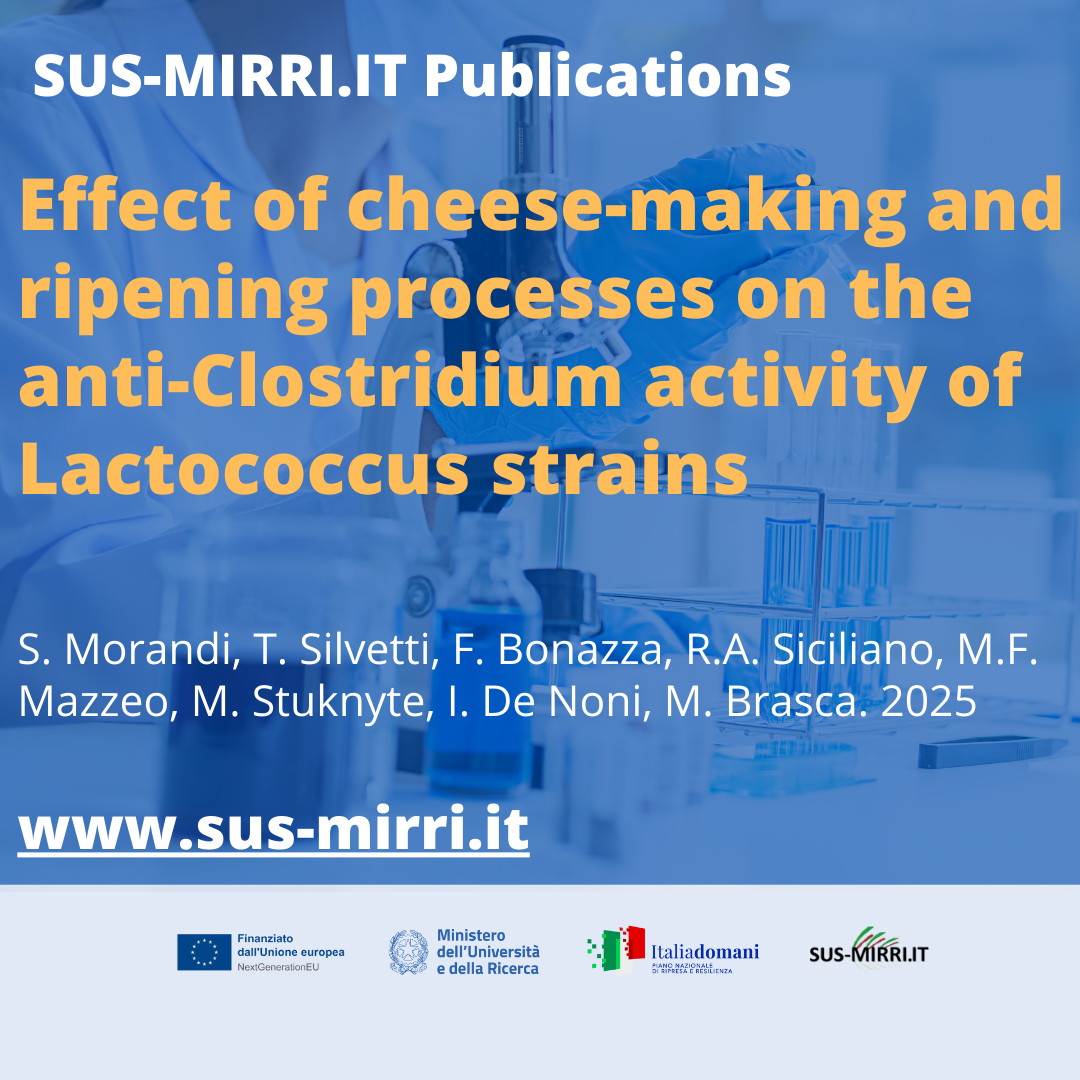S. Morandi, T. Silvetti, F. Bonazza, R.A. Siciliano, M.F. Mazzeo, M. Stuknyte, I. De Noni, M. Brasca. 2025 Effect of cheese-making and ripening processes on the anti-Clostridium activity of Lactococcus strains. Food Res Int. 209:116239. doi: 10.1016/j.foodres.2025.116239. Epub 2025 Mar 17. PMID: 40253133 https://pubmed.ncbi.nlm.nih.gov/40253133/
Abstract
Lactic acid bacteria (LAB) can produce bacteriocins that exert an antimicrobial activity against Clostridium spp. responsible for late blowing defects (LBD) in cheese. This study aimed to evaluate the influence of cheese-making and ripening temperature and salt concentration on the LAB bacteriocin production to enable their effective use in dairy chain. Five Lactococcus strains (Lc. cremoris FT27 and Lc. lactis N16, N26, SV77 and VC106) with anti-Clostridium activity were selected for their ability to produce bacteriocin at the optimal growth temperature (30 °C) and in temperature conditions resembling those of the uncooked and semi-cooked cheese-making. At optimal growth condition the bacteriocin titre resulted to be strain-dependent (from 2.4 to 3.3 log10 IU/mL), differently at temperatures applied during the cheese-making process only one strain (Lc. lactis VC106) was able to produce a high amount of bacteriocins (2.8 and 2.9 log10 IU/mL, respectively. During the period that simulated the ripening process at 10 °C, the bacteriocin titre of Lc. lactis VC106 declined progressively (1.6 and 1.9 log10 IU/mL after 170 days), but remained above the threshold required to inhibit the LBD. Our findings provide new evidence of how cheese-making and ripening processes adversely affect the bacteriocins synthesis and, consequently, the anti-Clostridium activity. Lc. lactis VC106 showed an antimicrobial activity comparable to that obtained at optimal growth temperature suggesting that this strain could provide a useful tool to inhibit spoilage bacteria in the dairy chain.
Read more at: https://pubmed.ncbi.nlm.nih.gov/40253133/



